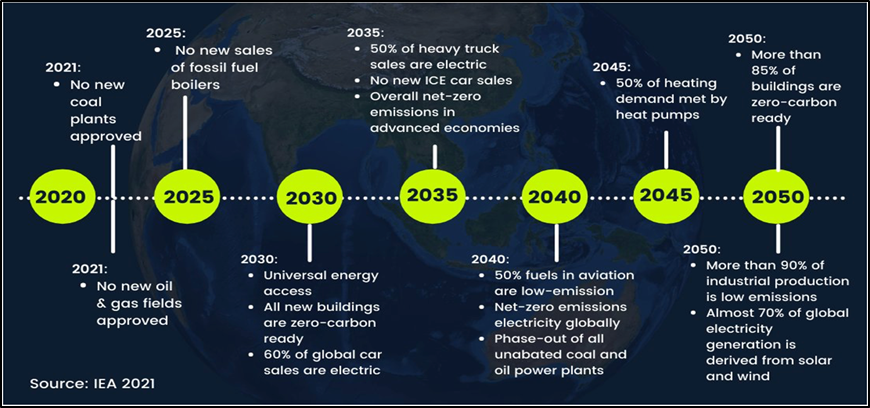In News:
- The International Energy Agency (IEA) published its World Energy Outlook Report 2022.
- As per the report, energy demand in India is expected to be the highest globally, growing at more than 3 per cent on annual basis, from 2021 to 2030.
What’s in today’s article:
- About IEA (Genesis, Collective Action Mechanism, Membership, HQ, etc.)
- News Summary (WEO Report 2022)
About International Energy Agency (IEA):
- The International Energy Agency was born with the 1973-1974 oil crisis, when industrialised countries found they were not adequately equipped to deal with the oil embargo imposed by major producers that pushed prices to historically high levels.
- This first oil shock led to the creation of the IEA in November 1974 with a broad mandate on energy security and energy policy co-operation.
- The IEA was established as the main international forum for energy co-operation on a variety of issues associated with energy production.
- This included setting up a collective action mechanism to respond effectively to potential disruptions in oil supply.
About Collective Action Mechanism:
- The Agency’s collective response system is designed to mitigate the negative economic impacts of sudden oil supply shortages by providing additional oil to the global market on a short-term basis.
- So far, it has been activated three times since the Agency’s creation –
- The first was in January 1991, during the First Gulf War.
- The second was in 2005, after the hurricanes Katrina and Rita damaged oil infrastructure in the Gulf of Mexico.
- The third was in 2011, during the Libyan crisis.
Member Countries:
- Only OECD member states can become members of the IEA.
- The Organisation for Economic Co-operation and Development (OECD) is an intergovernmental economic organisation with 38 member countries, founded in 1961 to stimulate economic progress and world trade.
- IEA member countries are required to maintain total oil stock levels equivalent to at least 90 days of the previous year's net imports.
- Currently, there are 31 IEA member countries. India is one of the 8 associate member countries.
- Headquarters: Paris, France
Reports Published by IEA:
- World Energy Outlook Report
- World Energy Investment Report
- India Energy Outlook Report
Recent Initiative taken by IEA:

- In November 2021, IEA released its Net Zero Emissions (NZE) Roadmap - named ‘Net Zero by 2050’.
- 'Net zero emissions' refers to achieving an overall balance between greenhouse gas emissions produced and greenhouse gas emissions taken out of the atmosphere.
- It is the world's first comprehensive energy roadmap to develop a new energy-sector pathway towards achieving NZE globally by 2050.
News Summary:
- The International Energy Agency (IEA) published its World Energy Outlook (WEO) Report 2022.
- The IEA has been publishing the World Energy Outlook Report, annually, since 1998.
- It is widely recognised as the most authoritative source for global energy projections and analysis.
Major Highlights of the WEO 2022 w.r.t. India:
- Increasing energy demand –
- India will become the world’s most populous country by 2025. This combined with the twin forces of urbanisation and industrialisation, energy demand in India will rise by more than 3 per cent per year from 2021 to 2030.
- India’s coal generation and oil imports are going to peak in 2030, while gas imports will double around the same time.
- Coal Production in India –
- The report states that India became the world’s second‐largest coal producer in 2021 (in energy terms), overtaking Australia and Indonesia.
- India plans to increase domestic production by more than 100 million tonnes of coal equivalent (Mtce) by 2025 from the current levels.
- Appreciation for Government Initiatives –
- The IEA cited government programmes such as the Gati Shakti National Master Plan and the Atmanirbhar Bharat scheme, and strong economics to state that India will see a robust growth in renewables and electric mobility, notably for two/three‐wheelers.
- Challenge for India –
- The IEA report points out that the primary challenge for India is to meet the rising electricity demand with renewables and nuclear on a large enough scale to reduce use of unabated coal‐fired generation.
- Currently, coal is used to produce nearly 75 per cent of electricity in India.









